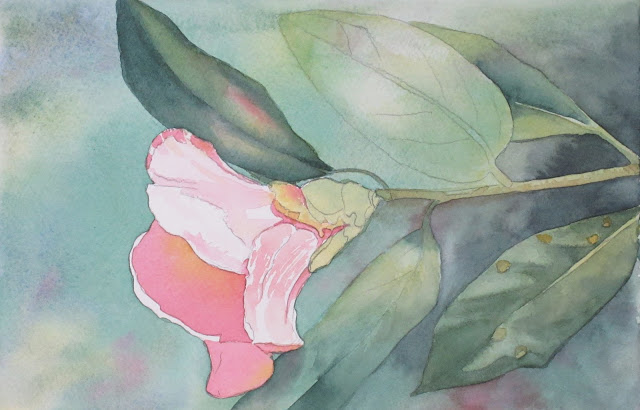| Wet-in-wet Watercolor. First I wet everything except the white petals (I made it very wet). I dropped in warm and cool yellow, some green, some blue, some red, some purple (I don't always do all these colors btw). Then I let this dry. Next I showed how to soften edges with water and your watercolor brush and a clean paper towel. Then I glazed rich green gold on the left side of the flower and showed you how to feather the edge. To feather an edge clean your brush, dry it off most of the way, and then use the brush to pull the edge out to lighten/soften. Do not go in with a wet brush or you will make blossoms. Next, I wet the left side leaf. It was less wet than the background. I mixed a green (I used quinacridone gold and pthalo blue which is a warm yellow and a green blue). I started on the left dark edge, cleaned and dried my brush, and pulled the color in toward the middle. I repeated this process working dark to light all around the leaf and then from the middle out on the right side of the stem. The leaf on the right was done wet on dry just for practice. It needs a few more steps to be complete. Next I mixed a gray with my primary colors. I used ultramarine blue, quinacridone rose and quinacridone gold for the gray I used. I made a light mixture, wet the petal (same wetness as the leaf) and worked from dark to light using the feathering technique. I will continue demonstrations in class on this piece. |


















































